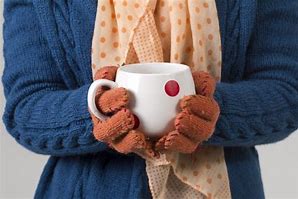Keeping cosy and warm but in an efficient way – here are some tips to help….

Keeping warm as efficiently as possible whilst being a responsible tenant
As a tenant, you have a responsibility to heat and ventilate the property to avoid bursts and mould developing. We have put together some useful information to help guide you through Autumn and Winter. Many of us forget the simple things to help heat the property and ourselves, but more importantly than ever, we are all conscious of the current energy prices so hopefully the below will be a welcome reminder of ideas you could try to keep costs down.
Boiler Tips
You only really need to have your boiler on its highest setting in the very depths of winter. Otherwise your boiler is needlessly heating water up to a very high temperature and wasting energy.
The timer allows you to schedule when your boiler turns on and off over a 24-hour period, so you don’t have to do it manually yourself. Some systems also have a programmer which gives you even more options, allowing you to set different times and temperatures throughout the week.
When you’re setting up your heating schedule, don’t forget to keep it switched off at times when you might be home and not need the heating on. Such as during the night.
Consider setting it to switch the heating off 20 minutes before you usually go out, as there will still be residual heat in your home.
It may seem obvious, but the hotter you have your home, the more money you’ll spend heating it. The Energy Savings Trust estimates your annual heating bill increases by about 10% for every degree you turn the thermostat up. Turning the thermostat down will therefore save you money, and a typical home can reduce their carbon emissions by about 300kg a year for every degree the thermostat is turned down, according to the Energy Saving Trust.
Thermostat temperature tips
- Set the room thermostat to 18°C and then turn it up by one degree each day until you find a temperature you’re comfortable with. Note that the temperature shouldn’t drop below 16°C for elderly people and those with impaired mobility.
- Room thermostats need a free flow of air to sense the temperature accurately – they must not be covered by curtains or blocked by furniture. Nearby electric fires, televisions or lamps could also stop them from working properly.
- As with your room thermostat, you should set the thermostatic radiator valves (TRV) in each room at a low level, then gradually turn them up until the room’s left at a comfortable temperature.
Turning a TRV to a higher setting will not make the room heat up any faster – that depends on the boiler size and setting, and the radiator size. All it will do is keep heating the room until it’s at the temperature designated by the TRV.
Despite their name, radiators actually work by convection. This means cold air enters at the bottom, is drawn through the radiator and hot air leaves through the top.
You can reduce your heating costs by ensuring each radiator in your home is able to circulate heat properly. For example, moving furniture away, not using cabinets to disguise them, and making sure they’re not covered by curtains.
Keeping warm tips
It is important to make sure the heat can adequately warm your space. Pull furniture, curtains, and other items away from heat vents and radiators. If they’re blocked, the heat won’t be able to circulate.
Hot air rises. So if you have multiple levels to your home, aim to spend more time on the upper level to take advantage of the warmer air there. You could even move your home office or TV from downstairs to upstairs over the colder months to have a cozier setting.
Everyone knows you should add a sweater, jacket, and other layers when you go outside in cold weather. You can apply the same principle inside, too. Layers will insulate your body and make it easier to regulate your body temperature. You can add or remove layers as needed to stay comfortable.
Keeping your feet warm will make your whole body feel warmer. |Wear warm wool stocks. Or keep a pair of slippers or shoes to wear around the house.
The oven and hob generates heat in your kitchen. Use them to add heat to your home and enjoy cooking too. Every time you use your oven during the colder months, leave it open after you’re done baking. This will allow the hot air to escape and add heat to the room. However, be cautious about doing this if you have children or pets; make sure they can’t reach the hot oven door or inside the oven. And never use the oven as a primary source of heat, especially if your appliance uses natural gas. Burning natural gas for long periods can increase carbon monoxide levels in your home.
It might seem counterintuitive to use a ceiling fan when you’re feeling cold, but it actually can help to warm you up. Let your ceiling fan turn at a low speed in a clockwise direction during the colder months. This will help to push the warm air that rises toward the ceiling back down toward floor level.
Drink hot drinks to keep you warm from inside but ensure that you are not overfilling and heating excess water when boiling kettle as this is wasted energy being used. Only heat what you need.
The same applies to washing up – if you have to put cold water in the hot water, you are wasting the hot water that you have just paid to heat up… be mindful of not wasting any heated water.
We hope you have found the above helpful.